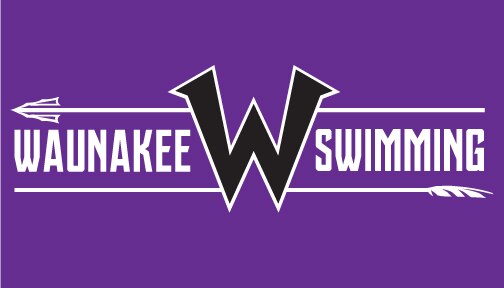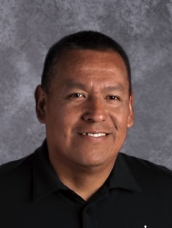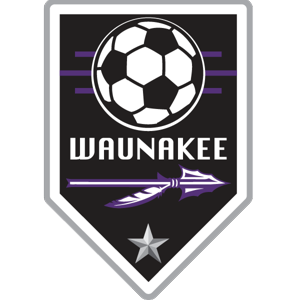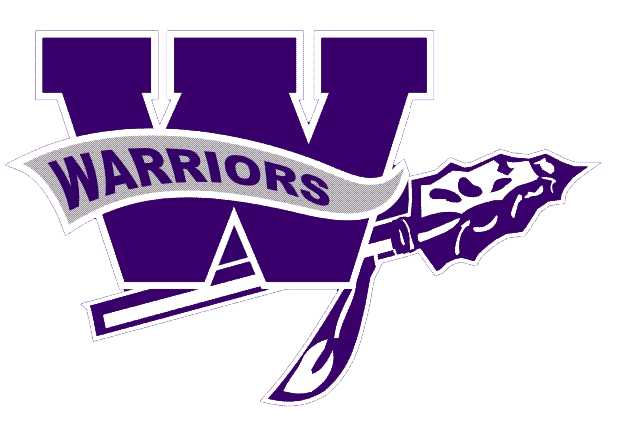Last month, the Waunakee Community School District Board of Education voted against a motion that would mandate that the district administration interpret the use of sacred imagery as a form of discrimination, and end the use of such imagery to accompany the school’s athletic nickname “Warriors.”
Although Waunakee High School does not have an official logo or mascot, a spearhead with a feather can often be seen on football helmets accompanying the school’s W initial, and on merchandise such as necklaces or rings.
In addition, a mural depicting an indigenous person in a loincloth and moccasins is located in the school’s “old gym” which is still in use today.
The motion, presented by former school board member for Waunakee Community School District Board of Education Micahel Brandt requested that “the Waunakee Community School District Board of Education directs district administration to interpret that the use of sacred images of any group of people for co-curriculars is a form of religious and ethnic discrimination and is precluded by current Board of Education policy effective immediately.”
The motion was defeated in a 5-2 vote.
This decision also comes in the wake of a recent advisory vote by the district’s Diversity, Equity, Inclusion Ad Hoc Committee — of which Brandt is the chair — urging the School Board to change the indigenous imagery, and a unanimous vote to urge removing the mural from the gym.
Despite the vote against Brandt’s motion, a rebranding process will be considered in the coming months.
Brandt noted that the use of these symbols flippantly devalues their cultural and religious significance.
“Everybody who uses that and wears it around probably doesn’t realize that they’re wearing something that’s considered holy to many people, that’s considered something that you are given when you’ve done something that merits, the highest level of respect in your community, but we’ve got it on football helmets and on jewelry and on roadsigns saying, ‘Fear the Spear.’ I think (that) creates a certain level of ignorance,” Brandt said. “There’s nothing wrong with being ignorant. There’s a problem with remaining ignorant when you know better.”
“They are also very dehumanizing, they’re derogatory, offensive,” said Tricia Zunker, a former member of the Wausau School District school board and a Ho-Chunk Nation Supreme Court justice. “When you have a school district that keeps the name ‘Indians’ and it’s a sporting event, and the opposing team is hearing things ‘beat the Indians’, that’s dehumanizing and this dehumanization can lead to violence.”

Prior to her statement to Madison365, Zunker sent a written statement to the Diversity, Equity, Inclusion Ad Hoc Committee to be presented during their meeting on March 8, 2021.
Despite this, Waunakee High School gym teacher Tim Decorah, also a member of the Ho-Chunk nation, has a different view regarding the imagery.

Decorah has been teaching at Waunakee for 26 years and coaching for 18. Ever since he has been at Waunakee, Decorah has been a part of local discussions regarding indigenous logos and symbols.
“The only thing I’ve heard people say, in comments about the feather is that it’s a religious thing, it’s a holy thing, it’s not just that,” Decorah said. “It’s virtue, it’s power, it’s wisdom … those are all things that we would want to embody our students to have when they leave the building. That’s what the feather is there for. It’s given in the act of bravery. The bravest warrior, 200, 300 years ago, if you had more feathers on your spear than somebody else, you were braver. So it goes a lot deeper than what people are pulling off the internet.”
“But if we’re trying to satisfy an agenda you’re going to have more conversations,” Decorah continued.
District administrator Randy Guttenberg said he believes the vote against the motion was made so as to take more time to further investigate the issue.
“The rationale behind the folks who voted no…was they wanted to one, investigate some of the pieces related to the dialogue that Mike brought forward,” Guttenberg said. “I think it was also a piece that they wanted to incorporate more of the voice of some of our Indigenous staff members who hadn’t been part of the formal process of reviewing some of the imagery and different things within the school district.”
“I think it’s just a matter of wanting to ensure that as we kind of formalize things moving forward that we also include individuals who were closest to that within our school,” Guttenberg continued.
Guttenberg added that a decision on what this process will look like, as well as how the district should address indigenous imagery, will be presented at tonight’s school board meeting.

Brandt and Zunker stated the contrary.
“We should be saying we will not use racialized mascots or logos at all. We should say that as like a moral position,” Brandt said. “I don’t think we need to go to the voters of the community and ask them whether or not it’s okay. It’s already not okay and we know it’s not okay. Do we need to have community input on whether or not they care, like, if all of the citizens in Waunakee and Westport and whatnot say, no, keep using Native American mascots, does that make it right?”

“This again isn’t a matter of personal opinion but something that should be determined based on research,” Zunker said. “Your role as the school board is to set educational policy and it is never good educational policy to stereotype an entire race of people. This is not a matter of personal opinion, but a decision that can be made based on the peer-reviewed credible research.”
In 2005, the American Psychological Association released a resolution for the “immediate retirement of American Indian mascots, symbols, images, and personalities by schools, colleges, universities, athletic teams, and organizations” stating that their use “establishes an unwelcome and oftentimes hostile learning environment for American Indian students that affirms negative images/stereotypes that are promoted in mainstream society.”
More recently, a 2020 report published by the Routledge Taylor and Francis Group revealed that “Native American mascots yield negative psychological effects (e.g., depressed self-esteem, community worth, and future achievement-related goals, and increased negative feelings of stress, distress, depression, dysphoria, and hostility) for Native American students.”
Both of these reports were sent to the Diversity, Equity, Inclusion Ad Hoc Committee along with Zunker’s statement.
In regards to the mural in the gym, Decorah expressed his concerns about its possible removal.
“It’s a conversation piece that I think needs to be had,” Decorah said. “ You need to talk about the history, as bad as the history was about how my people got here and how they survived, so it doesn’t happen again, so history doesn’t repeat itself and the atrocities that were brought upon my people, those things need to be talked about. A little uncomfortable but they need to be talked about.”
Recently, Decorah had a change of heart regarding the mural after speaking with some elders in his community.
“I understand it’s probably time [to take it down], but how can we still continue to have conversations about my people?” he asked.
As for the motion presented by Brandt, Decorah noted that the motion itself and the board’s decision is another example of what “white people have been doing all along,” which is acting in their capacity, whether it be as an oppressor or as a white savior, without the direct input of voices from communities of color, without the understanding that issues that affect that community require their contribution.
“You’ve still got to ask us what’s right or what’s wrong. You got to get our input,” Decorah explained. “You just can’t keep doing these things over and over and over and think that we agree with it.”
The past few months have been a transformative time, Decorah noted, in which he has been turning his frustration “into a passion,” focusing more of his energy on promoting Wisconsin Act 31 which requires all public school districts to include instruction on “the history, culture, and tribal sovereignty of Wisconsin’s 11 federally-recognized American Indian nations and tribal communities.”
Both Zunker and Decorah believe that Act 31 should be more robust and that the education of Waunakee students about the Indigenous tribes of Wisconsin should be of paramount importance.
Zunker said the Department of Public Instruction and the Wisconsin Association of School Boards have both acknowledged that there is not compliance with Act 31 across the state. As such, “it falls on local school boards, and if they don’t prioritize it, it’s just falling by the wayside or their curriculum is really weak.”
“It’s just not this developed curriculum that is supposed to be under the law. And that’s what I say in response to people that say, ‘oh you know we’re trying to honor,’ because if they were truly honoring Native Americans, they will be teaching Act 31,” she continued. “And then through teaching that, through complying with Act 31, it will be clear to the district, how problematic it is to still retain that offensive image or logo or whatever it is in their district.”
“Let’s try to do more with Act 31 and put a little more teeth into it,” Decorah added. “[Let’s make] sure that all students in the state of Wisconsin, at least the public schools, start to look a little more at the Native American side. And really all people of color, especially within the times that we are in, to be a little more accepting that we’re here. We’re not going anywhere.”
This story has been corrected to reflect that Tricia Zunker’s term on the Wausau Board of Education has expired.




























